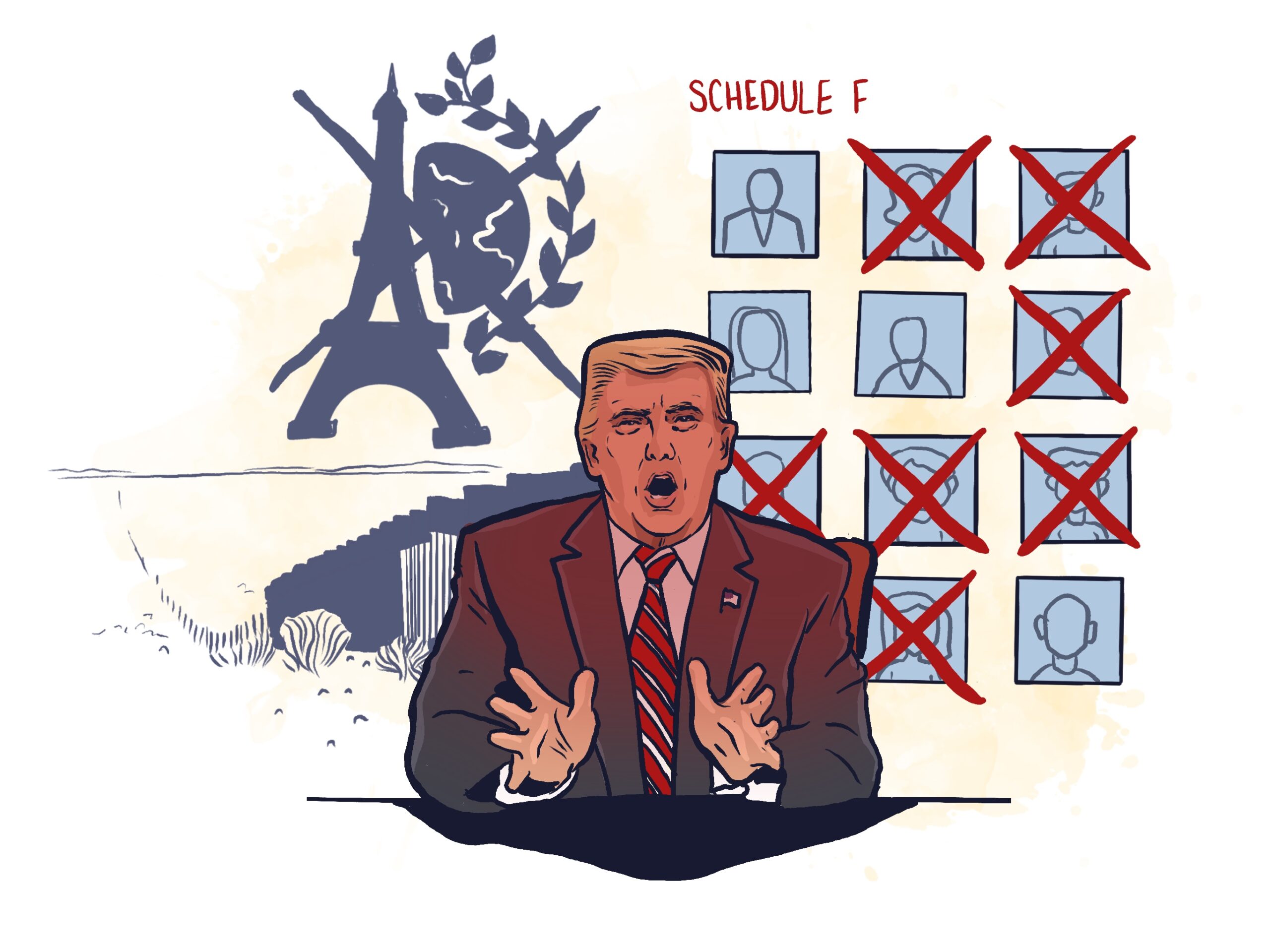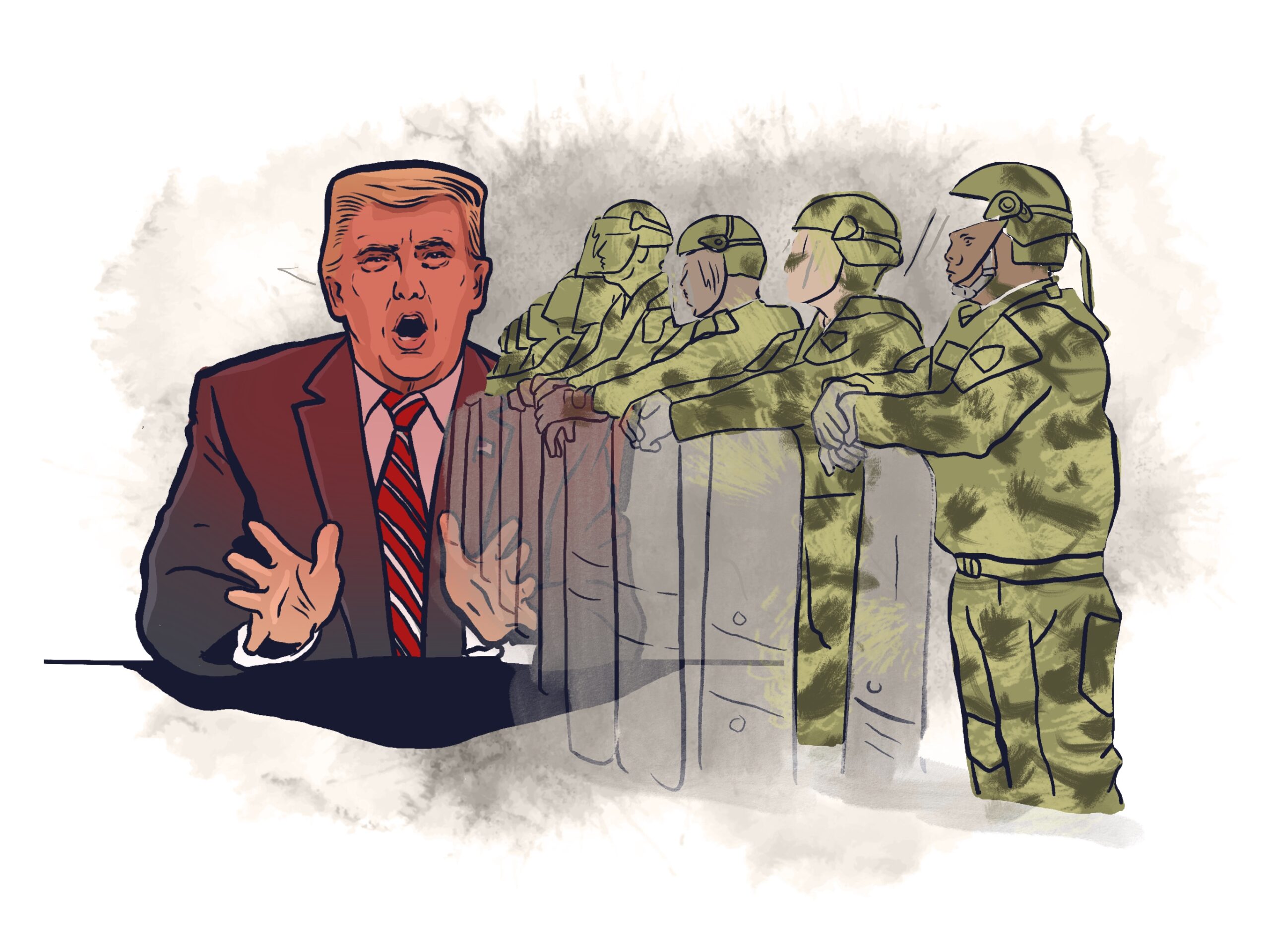On his first day in office, Trump signs a series of executive orders. He reallocates government money toward building a wall along the border with Mexico. He calls a halt to all government-led climate research and orders the U.S. to pull out of the international climate change agreements ( Paris Agreement). Trump reclassifies 100,000 government workers as Schedule F employees — making them “political” appointees that he can fire. Courts approve an injunction to all of this, but tens of thousands of government workers are now living precariously. Courts approve an injunction to all of this, but tens of thousands of government workers are now living precariously


You end up watching his boldest move that night, in time for the evening news: At 6:03 pm, Donald Trump invites cameras into the White House. He announces he’s “finally ending the lawlessness on the border.” He invokes the Insurrection Act, ordering the military to go to the border with Mexico and “shut it down.” He announces plans for “the largest domestic deportation operation in American history.”
You have trouble not constantly scrolling through responses on social media. As the actual text of the order leaks, pundits describe it as a generally lawful order to send the National Guard to patrol the hundreds of miles of unfenced border. The military’s engagement is intended to be provocative, but military analysts suggest it does not intend to engage in any combat operations. Over the next 100 days, the border dominates news, with reports that fewer and fewer immigrants are crossing the border. Trump declares victory. Progressive Democratic politicians call the end-run around congressional authority an “abuse of power.”

